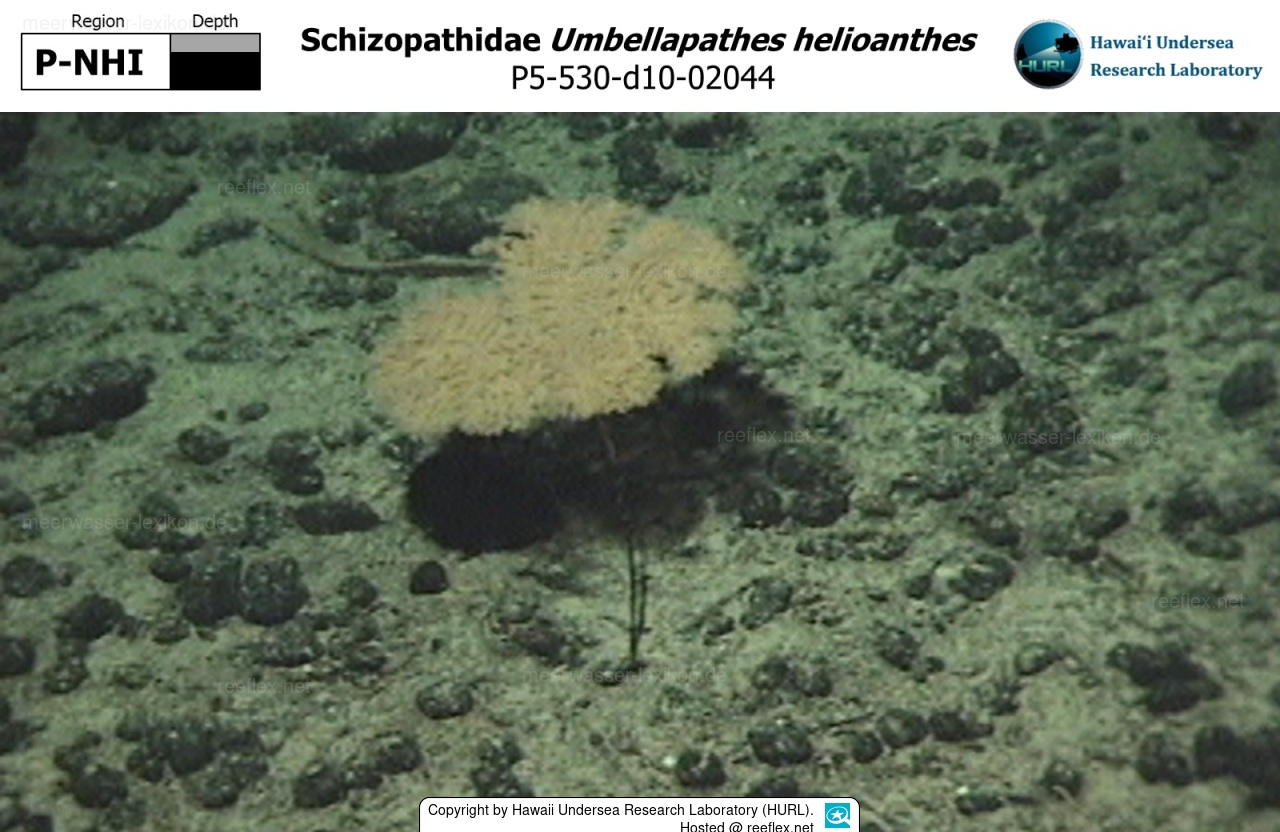Info
Umbellapathes helioanthes is a black coral that belongs to the order Antipatharia.
Umbellapathes helioanthes was discovered in the Laysan Seamount around Hawaii.
Umbellapathes helioanthes is monopodial and pinnate and has a long unfeathered stalk, on the strongly feathered upper part of the coral the polyps are arranged, two to three polyps per centimeter.
The tentacles of the polyps are relatively short and thick, 1 to 1.5 mm long.
Due to its deep distribution, Umbellapathes helioanthes has no energy-providing zooxanthellae; at these water depths there is not enough or no light for photosynthetically active dinoflagellates,
so that &lat must capture plankton and marine snow in order to generate life energy for growth and reproduction.
The black coral has the advantage that the long style can move in the current to catch food particles with the help of the polyps.
Not an animal for a marine aquarium.
Etymology: From the Latin "helio" (sun) and "anthus" (flower), an allusion to the general appearance of the coral
Umbellapathes helioanthes was discovered in the Laysan Seamount around Hawaii.
Umbellapathes helioanthes is monopodial and pinnate and has a long unfeathered stalk, on the strongly feathered upper part of the coral the polyps are arranged, two to three polyps per centimeter.
The tentacles of the polyps are relatively short and thick, 1 to 1.5 mm long.
Due to its deep distribution, Umbellapathes helioanthes has no energy-providing zooxanthellae; at these water depths there is not enough or no light for photosynthetically active dinoflagellates,
so that &lat must capture plankton and marine snow in order to generate life energy for growth and reproduction.
The black coral has the advantage that the long style can move in the current to catch food particles with the help of the polyps.
Not an animal for a marine aquarium.
Etymology: From the Latin "helio" (sun) and "anthus" (flower), an allusion to the general appearance of the coral







 Hawaii Undersea Research Laboratory (HURL), Hawaii, USA
Hawaii Undersea Research Laboratory (HURL), Hawaii, USA


